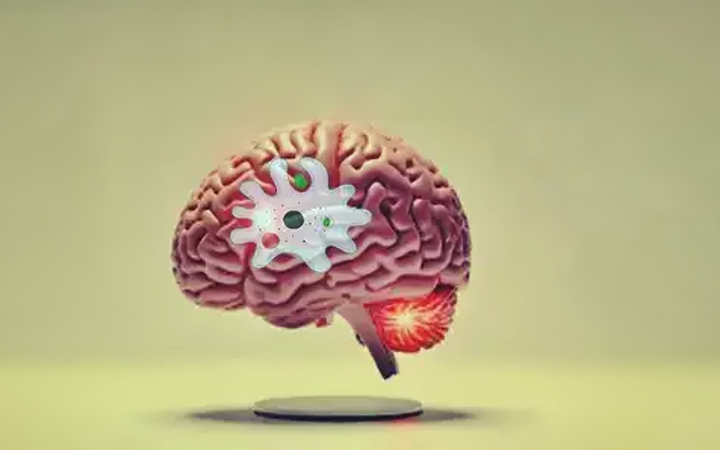Symptoms, Causes, and Prevention Tips
Kerala reported another case of primary amoebic meningoencephalitis (PAM) on Friday. “A 14-year-old boy residing in Payyoli, a district in North Kerala, has been diagnosed with this rare and deadly infection,” according to recent reports. This marks the fourth case of PAM in just two months.
Earlier in the week, E.P. Mridul from the Kozhikode district succumbed to the same disease on Wednesday, marking the third death caused by this infection. In response to the growing threat, Chief Minister Pinarayi Vijayan convened a high-level meeting on Friday. “The CM advised avoiding contaminated water bodies and ensuring swimming pools are properly chlorinated,” as a preventive measure.
What is Primary Amoebic Meningoencephalitis (PAM)?
Primary amoebic meningoencephalitis, commonly known as PAM, is a severe and rare infection of the central nervous system. “It is caused by amoebae found in freshwater sources such as lakes and rivers.” PAM is a subset of a broader disease called amoebic encephalitis. The early symptoms of PAM often resemble those of bacterial meningitis. Even with antimicrobial therapy, the mortality rate is alarmingly high, exceeding 90%, according to a report by the National Centre for Biotechnology Information. This condition is also referred to as the brain-eating amoeba because it directly attacks brain cells and tissues.
Causes of PAM
PAM typically affects individuals who are exposed to warm freshwater. “The amoeba enters the body through the nose and travels to the brain, where it causes inflammation of the nervous system.” This can occur during activities such as swimming, diving, or other water sports. The disease predominantly affects young and active individuals.
Symptoms of PAM
In the initial stages, patients exhibit symptoms similar to those of meningitis, including fever, headache, stiff neck, and nausea, according to the Centre for Disease Control (CDC) in the United States. As the disease progresses, symptoms can include confusion, lack of attention to people and surroundings, loss of balance, and hallucinations. “Death may occur between 1 to 18 days after the onset of symptoms.”
Treatment Options
Due to the rarity of this infection, there is no specific treatment for PAM. Unfortunately, recovery is not possible in most cases. The high mortality rate underscores the need for preventive measures and early diagnosis.
With the rise in PAM cases, it is crucial to take preventive measures seriously. Avoid swimming in warm freshwater bodies that might be contaminated. Ensure swimming pools are adequately chlorinated and follow safety guidelines. Stay informed about the symptoms of PAM and seek medical attention immediately if you suspect an infection.
For more information and updates on health news, please stay connected with us.

